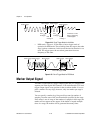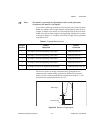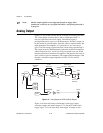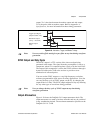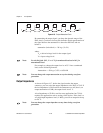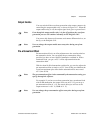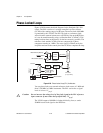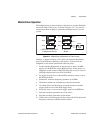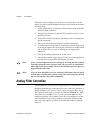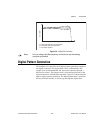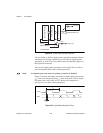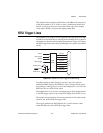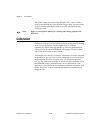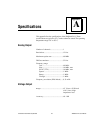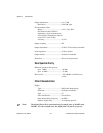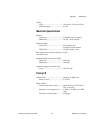
Chapter 4 Arb Operation
DAQArb 5411 User Manual 4-24
©
National Instruments Corporation
Example 2, shown in Figure 4-21b, shows an external device as the
master. To phase lock the DAQArb devices to this master perform the
following steps:
1. Set the master device to send any valid reference clock to the PLL
reference input connector.
2. Set up the slave devices so that the PLL reference source is set to
the I/O connector.
3. Set the PLL reference frequency parameter to the clock frequency
sent by the master.
4. The boards should now be frequency locked to the master.
5. To further phase lock the boards, connect the external trigger input
to the trigger input of the 50-in digital connectors of all the boards
and set up the slaves to receive the triggers on trigger input
connector.
6. Start the waveform generation on all the slaves.
7. Activate the external trigger signal. All the slaves are triggered at
the same time and get phase and frequency locked.
Note: If two or more DAQArb devices are running in Arb mode and are locked to
each other using the same reference clock, then you will see a maximum
phase difference of one sample clock on the locked boards when they are
triggered at the same time.
Note: If two or more DAQArb devices are running in DDS mode and are locked
to each other using the same reference clock, they will be frequency locked,
but you will not know the phase relationship.
Analog Filter Correction
The DAQArb 5411 can correct for slight deviations in the flatness of the
frequency characteristic of the analog low-pass filter in its passband, as
shown in Figure 4-22. Curve A shows a typical low-pass filter curve.
The response of the filter is stored in an onboard EEPROM in 1 MHz
increments up to 16 MHz. Curve C is the correction applied to the
frequency response. The resulting Curve B is a flat response over the
entire passband. If you want to generate a particular frequency with
filter correction applied, you have to specify that frequency through
software.



